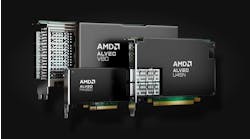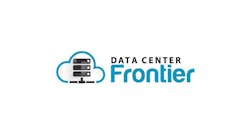Growing Demand Heightens Focus on Secondary Data Center Markets
A series of trends are increasing demand for data center space and power, creating opportunities outside of primary U.S. data center markets.
Micron recently took advantage of this incentive, committing to invest up to $100 billion to build a leading-edge semiconductor fabrication facility in New York to complement its existing manufacturing sites in the U.S. and Asia. Intel is also investing in U.S. facilities, supplementing its R&D capabilities in Oregon and Silicon Valley with a fabrication development in Arizona and plans for a landmark site in Ohio.
While the repatriation and expansion of manufacturing and development capabilities in the U.S. is creating economic development and job opportunities, it is also pushing demand for data center space and power to a tipping point where demand is outpacing supply in tier 1 markets. With limited land availability in these core locations, large enterprises, hyperscalers and colocation providers cannot readily purchase acreage to build new facilities. To continue to innovate groundbreaking products and achieve corporate objectives, these enterprises—as well as cloud service providers and media giants—need access to scalable data center space and power.
The Challenge in the Tier 1 Data Center Market
Space and power challenges are particularly acute in primary data center markets such as Northern Virginia and Silicon Valley, where available land, data center space and power are already in short supply. In Northern Virginia, Dominion Power recently warned it cannot meet data center power demand in the area.
Ongoing supply chain disruptions are amplifying this issue as hyperscalers and major enterprises procure large blocks of space and power well ahead of the need to address future capacity requirements. This advanced purchasing limits available capacity for other organizations with less buying power.
With core data center markets oversubscribed and unable to support new facilities, enterprises are placing key assets in high-growth secondary markets such as Hillsboro, Oregon; Phoenix, Arizona; and Las Vegas, Nevada that offer access to land banks, renewable power options and flourishing interconnection ecosystems.
The Shift to Secondary Data Center Markets
Hyperscalers, large enterprises and colocation providers are betting on these regional markets, constructing new facilities in these areas.
Hillsboro has become a hot spot for data center deployments, offering a cost-effective alternative to Silicon Valley and other expensive West Coast locations. Home to major multi-national organizations such as Intel, Nike and Columbia, the region offers proximity to Silicon Valley, low-latency connectivity to West Coast cloud deployments—including Microsoft Azure’s northwest deployment, Google Cloud and Amazon’s West 2—and also provides access to subsea cables connecting the West Coast to Asia and beyond. Flexential is expanding its presence in this high-impact market with its upcoming fifth deployment to meet the area’s explosive demand.
Just as Hillsboro provides a low-latency option over more costly West Coast facilities, Atlanta serves as an alternative to Northern Virginia deployments, offering proximity to large enterprises and hyperscalers that many organizations are already doing business with. As more industry giants continue to migrate or expand into tier 2 locales, other companies will follow to ensure proximity and low-latency connectivity to these organizations, building data gravity within the areas.
Added Value in Secondary Markets
While the availability of land, space and power are the primary drivers drawing large enterprises and hyperscalers to tier 2 regions, these locations hold additional appeal as well.
Minimizing TCO
Regional data centers may deliver an improved total cost of ownership (TCO) over metro locations through a combination of lower power and real estate costs. Some states and counties also offer tax incentives for additional savings. For example, Oregon does not have a sales tax, and Arizona, Georgia and Minnesota, among others, offer tax abatements to data center operators, some of which extend to their customers. Organizations can funnel these savings back into their core businesses.
Speeding Time-to-Market
Colocation data centers within regional markets can help speed deployment. By renting space in a third-party facility, rather than standing up a new facility, enterprises avoid the time and upfront costs of data center construction. It also enables organizations to shift to more predictable OPEX models and minimize supply chain disruptions and worker shortages that can prolong build timelines.
Offering Expertise
Third-party data centers devote tremendous effort to researching, designing and constructing facilities within appropriate regions, factoring in expansion potential, power capacity, connectivity options and proximity to dynamic partner ecosystems. By utilizing a colocation site in the most appropriate secondary market, enterprises also enable their internal teams to more fully focus on initiatives that strength the business and advance the corporate agenda.
Supporting Sustainability
Sustainability and access to clean, lower-cost power sources is a growing priority for many organizations, especially large enterprises that are in the public eye. Some regional markets can better support these efforts. For example, Oregon’s ample water supply offers greater access to hydroelectric power than drought-ridden California. The abundant water supply also supports the more intense cooling requirements of high-density applications.
As major enterprises continue to repatriate operations and contend with space and power supply challenges in primary data center markets, they will increasingly leverage secondary locations to support intensifying demands, reduce latency and improve application performance as they pioneer next-generation capabilities.






